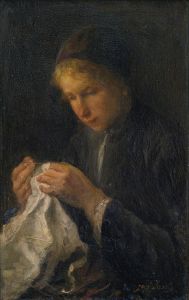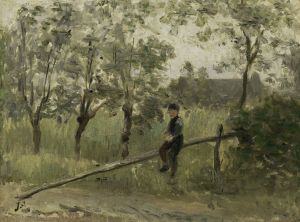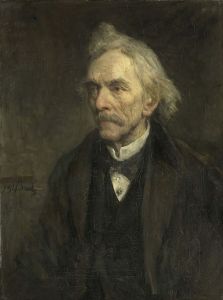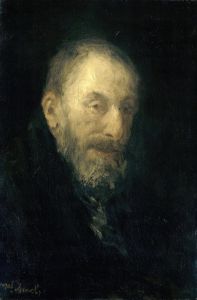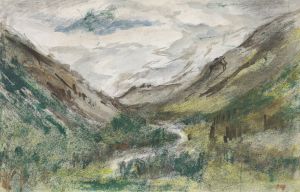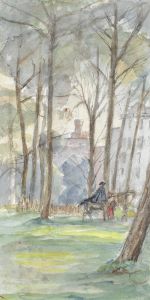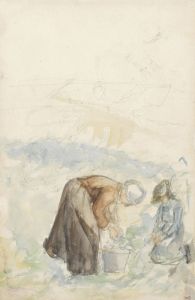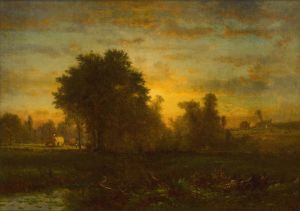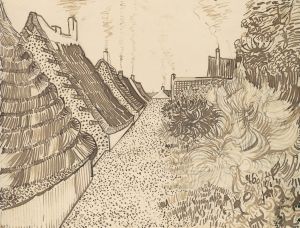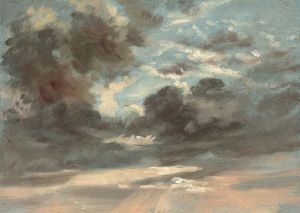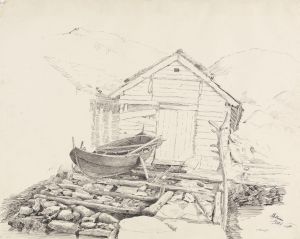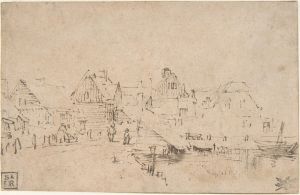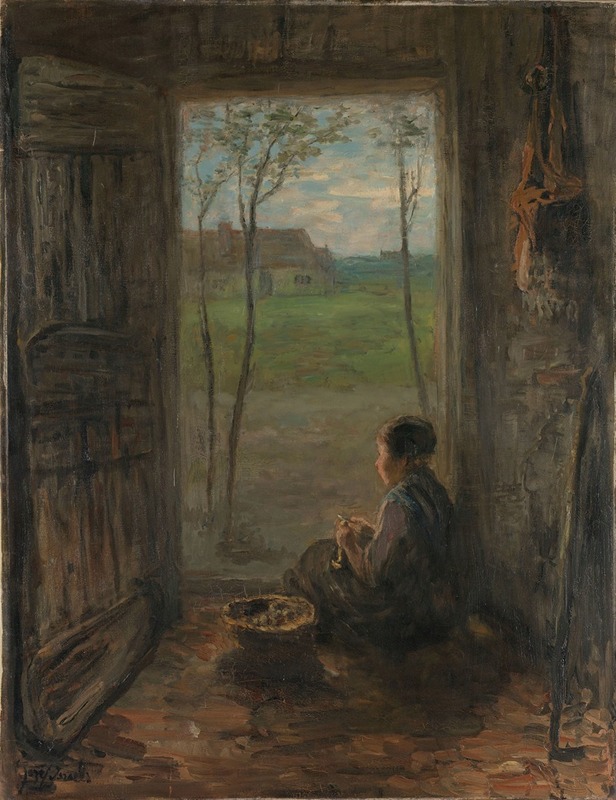
A Laren Scene
A hand-painted replica of Jozef Israëls’s masterpiece A Laren Scene, meticulously crafted by professional artists to capture the true essence of the original. Each piece is created with museum-quality canvas and rare mineral pigments, carefully painted by experienced artists with delicate brushstrokes and rich, layered colors to perfectly recreate the texture of the original artwork. Unlike machine-printed reproductions, this hand-painted version brings the painting to life, infused with the artist’s emotions and skill in every stroke. Whether for personal collection or home decoration, it instantly elevates the artistic atmosphere of any space.
Jozef Israëls, a prominent Dutch painter of the 19th century, is renowned for his poignant depictions of peasant life and his contributions to the Hague School, a group of artists known for their realistic portrayals of rural scenes and everyday life. One of his notable works is "A Laren Scene," which exemplifies his skill in capturing the essence of rural Dutch life with empathy and detail.
"A Laren Scene" is set in the village of Laren, located in the province of North Holland. During the late 19th and early 20th centuries, Laren became a popular destination for artists seeking inspiration from its picturesque landscapes and traditional way of life. Israëls, like many of his contemporaries, was drawn to the simplicity and authenticity of rural communities, which provided a stark contrast to the rapidly industrializing cities.
The painting reflects Israëls' characteristic style, which combines elements of realism with a touch of sentimentality. His use of a muted color palette and soft brushwork creates a tranquil and contemplative atmosphere, inviting viewers to immerse themselves in the scene. Israëls often focused on the daily lives of peasants, capturing their struggles and resilience with dignity and respect. This approach earned him the nickname "the Dutch Millet," in reference to the French painter Jean-François Millet, who similarly depicted rural life with compassion.
In "A Laren Scene," Israëls likely portrays a moment of everyday life in the village, possibly featuring figures engaged in routine activities such as farming, tending to animals, or interacting with one another. His attention to detail and ability to convey emotion through subtle gestures and expressions are evident in the way he renders his subjects. The painting not only serves as a visual document of a specific time and place but also as a universal commentary on the human condition.
Israëls' work was highly regarded during his lifetime, and he received numerous accolades for his contributions to art. His paintings were exhibited widely, and he was a member of several prestigious art societies. "A Laren Scene" is representative of his mature style, which evolved over the years to incorporate more nuanced compositions and a deeper exploration of light and shadow.
The impact of Israëls' work extends beyond his immediate circle, influencing subsequent generations of artists who admired his ability to capture the soul of his subjects. His paintings continue to be celebrated for their emotional depth and technical mastery, securing his legacy as one of the leading figures of the Hague School.
Today, "A Laren Scene" is appreciated not only for its artistic merit but also for its historical significance, offering insights into the cultural and social landscape of the Netherlands during a period of transition. Israëls' work remains a testament to the enduring power of art to reflect and shape our understanding of the world around us.





